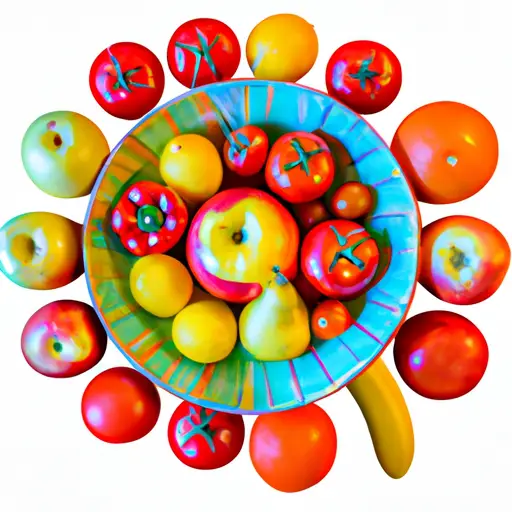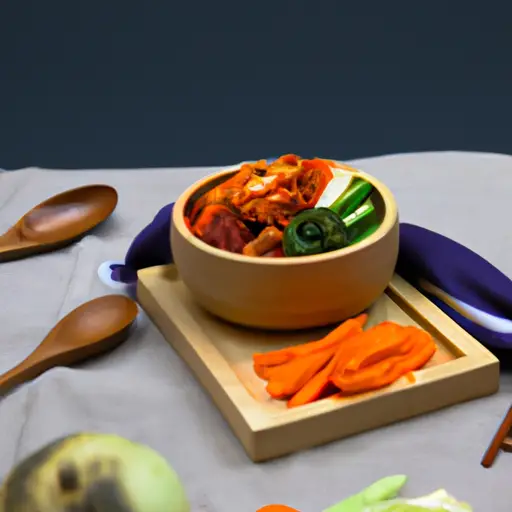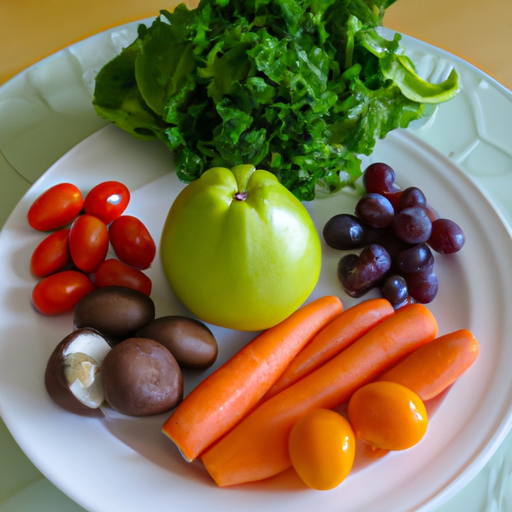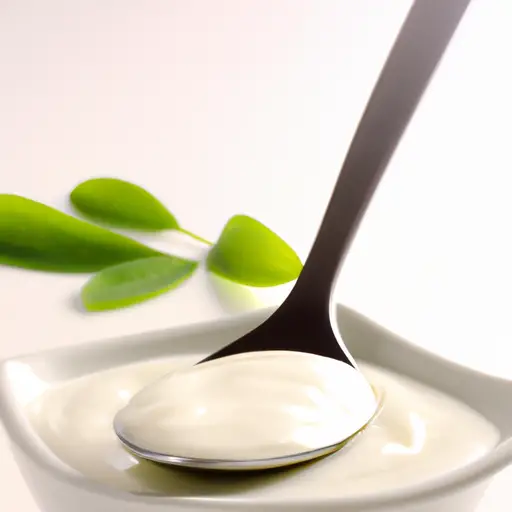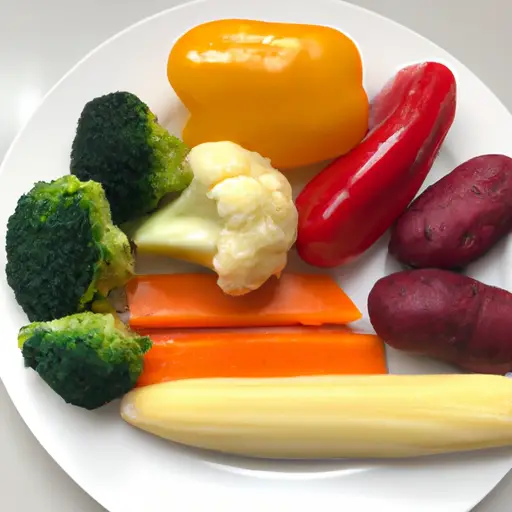The Benefits of Eating High-Fiber Foods for Improved Health
Let’s talk about fiber, shall we?
Hey guys, it’s me, your friendly neighborhood nutritionist! Today, I want to talk about the oh-so-essential nutrient that is fiber. So, what exactly is a high-fiber diet? Essentially, it’s a diet that contains a lot of naturally occurring fiber from whole foods such as fruits, vegetables, nuts, seeds, and grains.
Now, I know what you may be thinking. Fiber, really? Trust me when I say that fiber is not just some boring nutrient that your grandma told you to eat. In fact, incorporating high-fiber foods into your diet can have a plethora of benefits for your overall health.
So, why exactly should you care about eating a high-fiber diet? Well, for starters, fiber can help keep you fuller for longer, aid in digestion, regulate blood sugar levels, promote heart health, and even boost your energy levels. Plus, who doesn’t love a good bowel movement?
So, if you’re ready to start reaping the benefits of a high-fiber diet, let’s dive right into the best high-fiber foods to incorporate into your daily routine.

*For more on the advantages of eating high-fiber foods, check out this article from The Lovely Life of Leah.
Bring on the Roughage: High-Fiber Foods that Keep You Full and Satisfied
When it comes to healthy eating, one of the most important things you can do is add more fiber to your diet. Fiber is a type of carbohydrate that the body can’t digest, so it passes through the digestive system virtually intact. This might not sound like a recipe for success, but fiber is actually incredibly beneficial for your body, especially when it comes to maintaining a healthy weight and regulating your digestive system.
So, what are some high-fiber foods you should be incorporating into your daily meals? Here are a few of my favorites:
Beans and Legumes
Beans and legumes are a fantastic source of both protein and fiber. You don’t need to be a vegetarian to appreciate how filling and nutritious a bowl of lentil soup or a plate of black bean tacos can be.
Nuts and Seeds
Nuts and seeds might be small, but they pack a big punch when it comes to fiber. A handful of almonds or sunflower seeds can help keep you full between meals, and they’re also a great source of healthy fats.
Whole Grains
Whole grains like quinoa, brown rice, and bulgur are a great way to add fiber to your diet while also getting a healthy dose of nutrients like vitamins, minerals, and antioxidants.
Fruits and Vegetables
Of course, no list of high-fiber foods would be complete without mentioning fruits and vegetables. Loaded with vitamins, minerals, and antioxidants, these colorful foods are essential for good health.
Incorporating more of these high-fiber foods into your diet can be surprisingly easy. Try adding some beans or lentils to your salads or soups, snacking on raw veggies with hummus, or swapping out white bread for whole-grain options. With a little creativity and experimentation, you’ll find that adding more fiber to your diet is a simple and delicious way to improve your overall health and wellbeing.
Discover the Health Benefits of High-Fiber Foods
Are you looking for a natural way to boost your health and energy? Incorporating high-fiber foods into your diet may be the solution you need. Here are some health benefits you can expect:
Weight Management
Fiber-rich foods are more filling and can help you maintain a healthy weight. High-fiber diets can also reduce the risk of overeating by making you feel satisfied for longer periods. If you’re trying to lose weight, consuming foods that are high in fiber can be a natural and healthy way to get started.
Improved GI Health
Not only does fiber help with digestion, but it also helps prevent digestive problems. A high-fiber diet can promote regular bowel movements and prevent constipation. Additionally, consuming more fiber can help reduce inflammation in the gut and improve overall digestive health.
Reduced Risk of Type 2 Diabetes
Eating high-fiber foods is also linked to a lower risk of developing type 2 diabetes. Fiber-rich foods slow down the absorption of glucose in the body, which can prevent blood sugar spikes and keep insulin levels stable. This makes fiber an excellent addition to a diabetes management plan.
Heart Health
Fiber can play a role in maintaining good heart health. Studies have shown that a high-fiber diet can help reduce risk factors such as high cholesterol and high blood pressure. By consuming more fiber, you can help prevent heart disease and other cardiovascular issues.
Improved Energy
Fiber is also essential for boosting energy levels and reducing fatigue. By slowing digestion and keeping blood sugar levels stable, high-fiber foods provide a steady source of energy throughout the day. Overall, a fiber-rich diet can help you feel more alert and productive.
If you want to start experiencing these health benefits, try incorporating more fiber-rich foods into your diet gradually. Choose whole grains, fruits, and vegetables, and make sure to drink plenty of water to avoid constipation. By making these small changes, you can enjoy better health and vitality in no time!
It’s All About the Fiber: Tips from an Expert
Starting a high-fiber diet can be overwhelming, but don’t worry, I’ve got you covered! As an expert in nutrition, I have some tips to help you incorporate more fiber into your diet.
Start slow
Don’t try to drastically change your diet overnight. Instead, gradually add fiber-rich foods to your meals. This will give your body time to adjust and prevent any digestive discomforts.
Drink plenty of water
Fiber absorbs water, so it’s important to stay hydrated. Not drinking enough water can lead to constipation and other digestive issues. Aim for eight glasses of water a day.
Choose whole grains
Swap out refined grains for whole grains. This includes bread, pasta, and rice. Whole grains contain more fiber and other nutrients than refined grains.
Include fruits and vegetables
Fruits and vegetables are excellent sources of fiber. Choose varieties with the skin on for an extra boost. Aim for at least five servings of fruits and vegetables a day.
Try different sources of fiber
Fiber can come from many sources, including beans, nuts, and seeds. Experiment with different recipes and cooking methods to incorporate these into your diet.
Now that you have some tips, start adding more fiber to your meals today! Your body will thank you.
Wrap it Up: Why High-Fiber Diets are a Game Changer
So there you have it, folks! A high-fiber diet is one of the best things you can do for your health. Not only will it keep your digestive system running smoothly, but it can also help you maintain a healthy weight, reduce your risk of chronic diseases like type 2 diabetes and heart disease, and boost your energy levels.
But how can you incorporate more fiber into your diet? The key is to start slow and gradually increase your intake. Drink plenty of water to help fiber do its job, and choose whole grains, fruits, and vegetables as your main sources of fiber. Don’t be afraid to try new sources of fiber, like chia seeds or quinoa, and mix things up to keep your meals interesting.
If you’re new to high-fiber diets, it may take some time for your body to adjust and for you to find the right balance of fiber. But trust me, the benefits are worth it. So go ahead and start adding more fiber to your diet today!
